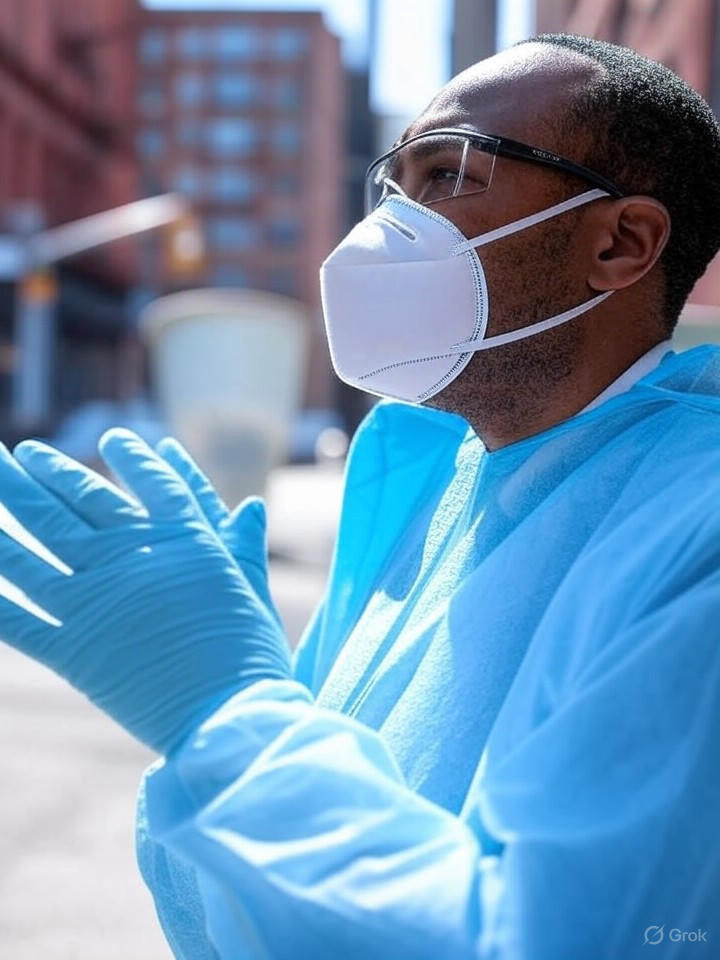The Outbreak’s Toll
In the heart of New York City’s Central Harlem, a deadly outbreak of Legionnaires’ disease has claimed five lives and sickened at least 108 people, marking one of the most significant clusters of the bacterial infection in recent years. The outbreak, which began in late July 2025, has prompted an urgent response from health officials, who are racing to identify and mitigate the source of the Legionella bacteria. According to reports from AP News, the latest fatality was confirmed on Monday, underscoring the rapid escalation of cases in this densely populated area.
Legionnaires’ disease, a severe form of pneumonia caused by inhaling aerosolized water droplets contaminated with Legionella, does not spread person-to-person but thrives in man-made water systems like cooling towers and plumbing. Health experts note that vulnerable populations, including the elderly and those with compromised immune systems, face the highest risks. In this instance, the cluster is concentrated in ZIP codes around Central Harlem, where community leaders have been mobilizing to educate residents on symptoms such as fever, cough, and shortness of breath.
Tracing the Source
Investigations by the New York City Health Department have pointed to contaminated cooling towers as the likely culprit, a common vector in urban outbreaks. Testing revealed positive Legionella samples in several building systems, including some city-run facilities, as detailed in coverage from The New York Times. Despite these findings, officials have not yet pinpointed a single definitive source, leading to widespread inspections and remediation efforts across the affected neighborhoods.
The response has involved flushing and disinfecting water systems, with Governor Kathy Hochul defending the city’s actions amid criticism over the pace of containment. As reported by Newsweek, Hochul emphasized the deployment of additional resources to support testing and treatment, highlighting the challenges of managing such outbreaks in a city with aging infrastructure.
Public Health Implications
For industry insiders in public health and urban planning, this outbreak serves as a stark reminder of the vulnerabilities in municipal water management. Legionella bacteria flourish in warm, stagnant water, and New York City’s dense network of high-rises amplifies the risk. Data from the Centers for Disease Control and Prevention indicates that outbreaks like this one contribute to thousands of cases annually nationwide, with fatality rates hovering around 10%.
Community outreach has been critical, with the NYC Health Department advising residents in impacted areas to seek immediate medical attention for flu-like symptoms. Insights from CNN reveal that 14 individuals remain hospitalized, prompting calls for enhanced preventive measures, such as regular maintenance of cooling systems and stricter regulations on building water quality.
Broader Lessons and Prevention
Experts are drawing parallels to past incidents, including a 2015 Bronx outbreak that killed 12, to advocate for proactive strategies. This includes advanced monitoring technologies and public-private partnerships to upgrade infrastructure. As noted in ABC News, the current cluster’s growth from initial reports of 67 cases to over 100 illustrates the need for swift, transparent communication to curb spread.
Looking ahead, the incident could influence policy, pushing for federal funding to modernize urban water systems. Health professionals stress that while the risk remains low for most, vigilance in maintenance and rapid response protocols are essential to prevent future tragedies. With cases stabilizing but the investigation ongoing, New York City’s handling of this outbreak will likely inform best practices for cities worldwide facing similar threats.
